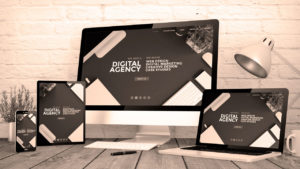5 Steps to Build Your Branding in Vancouver
When it comes to starting a new business, there are many points that entrepreneurs need to consider – and a very important one is brand building. After all, it’s the brand that will represent your business in people’s minds, passing on the impressions, characteristics and market positioning of your business.
It’s through branding that we differentiate companies and products, but its also through branding that we develop affective bonds, emotions and even feelings with the business.
For all that, branding should be something very well thought of – and go beyond simply developing a logo. It’s critical to analyze what you want to convey with your business, who you want to reach and how your business will be positioning in the minds of these consumers.
Sound too hard? See the tips we separated and remeber to hire a professional Branding in VANCOUVER to make the best brand for you.!
1- Logo Development
Remember that it’s not your brand, but a way to quickly communicate your brand and differentiate it from the competition.
That’s why a good logo is easy to understand, communicates with the right audience, can convey a message, is easily recognizable to competitors, can be used in a variety of sizes and can have a good impact.
There are many logo options to choose from, such as:
· Abstract: they are logos that do not have an explicit meaning, on the contrary, customers themselves create the meaning they want. An example is Google Chrome;· Mascot: logos represented by the face of a mascot. Although they help humanize the brand, they are falling out of favor and are only suitable for specific segments (as if you want to give your brand a more retro look). Quaker is a good example of a logo this way.
· Emblem: Most often circular and combine text and emblem, creating a sophisticated and bold look, such as the Starbucks logo;
· Initials: If your brand name is made up of 3 or more names, it is a good idea to summarize it to make it easier for you to remember, and initials can make up your logo, such as IBM;
· Icon: Also called symbolic, is the representation of your brand through a visual metaphor, for example the Twitter bird that refers to tweets.
· Typographic: These are text logos that use colors and fonts to create a visual identity. The disadvantage is that this logo is harder to scale and loses readability when its reduced. The problem can be solved by creating an iconic logo or turning the first letter into a logo. An example is the Facebook logo;
· Combination: You can combine many of the above styles, most commonly using icons and typography such as the McDonald’s logo.
As you have seen, branding involves a number of steps – and goes far beyond developing a logo. After all, you need to think about the personality and characteristics of your brand, which should be in tune with your company and your target audience.
Did you like this content? Want to invest in creating a brand for your business? Agency Madison is the right Marketing Agency in Pembroke Pines for your business. Contact our experts and learn how we can help you!
2- Understand your company
Do your homework. Understand very well who your company is. This involves defining the mission, vision and values of your business.
Also evaluate what your company is different from and do a study of your market, seeking to understand more deeply who your main competitors are – and how they position themselves.
All of these points are essential because these characteristics need to be reflected in your brand. If your business, for example, focuses on sustainability and environmental concerns, it is important that this feature is communicated to your customers, differentiating your company from others.
3- Consider the brand graphics
The way all these items are communicated to your audience is through the graphic elements that make up the logo, such as the colors, fonts, symbols, among others. So obviously, they need to be in tune with your brand message and your target audience.
Colors, for example, can convey a number of sensations. See some:
· Yellow: prosperity and energy, as well as stimulating appetite;
· White: peace, innocence, hygiene, cleanliness and purity;
· Blue: serenity, credibility and security;
· Burgundy: royalty, elegance, grandeur, power and great knowledge;
· Brown: maturity, strength and comfort;
· Orange: energy, creativity and movement;
· Gray: stability and success;
· Black: luxury and sophistication;
· Rose: romanticism and themes related to the feminine universe;
· Red: passion, strength and power;
· Green: nature, tranquility and hope.
The font can also convey these sensations, so they need to be careful in choosing. Ideally, choose a font that is easy to read and choose to work with a maximum of 2 fonts in one logo (one for the title and one for other text that may be incorporated into the logo).
4- Think about the characteristics and positioning of your brand.
When it comes to branding, a really cool exercise is trying to think as if your brand were a person – and thus attribute to it characteristics, qualities, and adjectives that help identify and translate it.
For example, if we take Netflix for analysis, what characteristics does this brand have? We can say that she is innovative, young, dynamic, present in social media, communicative, revolutionary, funny etc.
These are all essential attributes that helps shape the brand’s mental image for consumers – and also create an identity of those people with the company.
Another essential point is understanding what’s your positioning in the market and what does your brand promise to your customers?
Remember, It’s no use promising your brand with a unique and differentiated customer experience, if you end up delivering the same as your competitors (or even worse).
5- Evaluate your audience
It’s essential that your brand can communicate properly with the audience you want to attract. The more information about these people you have, the better your brand will be.
If your idea is, for example, to attract young people, its important that your brand refers to some attribute, such as innovation, agility, creativity, communication, joy, cheerfulness, among others.
A brand whose audience is older and mature people will need to communicate other feelings such as maturity, trust, solidity, prestige etc.
There are many aspects that you can raise about your audience that will help you right now such as:
· Age range;
· Income;
· Profession;
· Location;
· Most consuming media;
· Language;
· Consumption habits;
· Problems that your products help solve;
· Doubts and insecurities that prevent the purchase;
· Among others.




